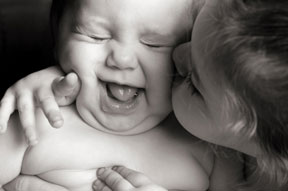hat makes a great memoir? A story about a woman who comes alive on the page, grabs you by the hand, and takes you along on her journey. Readers need to be interested in and care about people in a memoir, and they want to get to know your characters—whether they end up liking them or not. Yes, I just said characters because people are characters, too. Consider the opening lines from a recently finished memoir by Ingrid Ricks called Hippie Boy: A Daughter’s Memoir.
December 1979
I should have slammed the door in Earl’s face.
It’s what I wanted to do the minute I saw him standing on our porch, snow clinging to his greasy, black hair like dandruff.
He was thick and short, 5’7” at most, with pasty white skin and a gut that pressed against his plaid, button-down shirt and hung in a lump over his belt buckle. His fingernails were stained and filled with dirt, an instant giveaway that he worked as a mechanic even if Mom hadn’t mentioned it. But it was his eyes that bothered me most. They were icy-blue and hard, magnified by thick glasses that made him look like they were going to pop out of his head.
...
As soon as Earl entered, a smell that reminded me of rotting hamburger meat filled the air. Mom appeared a minute later dressed in her standard date attire: a bell-shaped white skirt that hit her mid-calf and a ruffled, polyester blouse covered in a tiny, purple floral print. Her wildflower Avon perfume trailed behind her, competing with the odor coming from Earl.
Hippie Boy: A Daughter’s Memoir by Ingrid Ricks, © 2010
Too often, memoir writers think characters and character development are for fiction writers. After all, they are writing about real stories and don’t need to worry about describing the people. But quite the opposite is true. In just a few lines, Ingrid Ricks has developed Earl as a character. She didn’t rush. She helped us see the same person she saw—a man who would soon become her stepfather. The next time Earl is mentioned, we already know whom this person is on multiple levels. We already have an attitude about him.
Sure, a memoir needs a beginning, a middle, and an ending. There needs to be plot and a story arc. But memoir, perhaps even more than fiction, needs well-etched people. To help you write about people your readers will care about, let’s explore five dimensions of character—identity, description, demographic factors, psychographic attributes, and personality. By the time you complete the exercises that follow, you will have described one person in full. We suggest you use yourself as the person in the exercises. However, the same exercises will help you develop every person in your memoir.

“...focus on the essence of the person and the turning point or major event that made that person whom he or she is.”
A School of Thought for Character Development
But first, let us consider a few approaches to character development. They range from “the characters develop themselves” to “use an A-Z list of questions to fully describe a character.” We’ve also added our own twist that works well with memoir. For each significant person in your story, focus on the essence of the person and the turning point or major event that made that person whom he or she is. If you don’t know how the person became whom she or he is, then determine the person’s major impact, as that reflects the person’s strengths and weaknesses. The character’s development begins with this core, this essence, and other facets grow outward from this. Let me give two examples. The first tells of a turning point that shaped the character, and the second looks at a person’s major impact.
Sue Grafton’s protagonist, Kinsey Millhone, has her own Wikipedia entry.
Kinsey Millhone was born on May 5, 1950. Her unusual first name was her mother’s surname before her marriage to Kinsey’s father. Kinsey lived with her parents until they were killed in a car wreck when she was five and survived in the car for several hours before she was rescued. She then moved in with her aunt (her mother’s sister) Gin, who was the only relative still in contact with her mother, the rest of the family having disapproved of the marriage and cut off contact with her. From her Aunt Gin, Kinsey acquired various eccentricities, including a liking for peanut butter and pickle sandwiches.
The entry goes on from there, and I urge you to look it up. By the time you’ve read her brief profile, Kinsey will seem like a real person with a description that includes height, weight, hair color and style, clothes, health fitness routine, food preferences, education, profession, and marital status. However, it is the death of her parents when she was only five and her upbringing by a reclusive aunt that shaped much of Kinsey’s personality and adult behaviors. The childhood tragedy is the turning point.
The second example, one that shows the impact of a person rather than a person’s turning point, comes out of Matilda’s own experience. [Matilda is co-author of this article.] “If I were to describe the essence of my father, I would say:
- It was his capacity for unconditional love. Why was he like that? I don’t really know. Was there a turning point that made him that way? Perhaps, it was just the result of his personality. Perhaps he had a role model when he was young. All I know is that by the time I was a teenager and old enough to reflect on him as someone who was more than just my father, his love of people and willingness to love them no matter what ruled his life. It affected everything from his home life, his family relationships with his six brothers (many of whom he helped financially, even though he was the next to youngest and not wealthy by any standard), his business career (including owning his own company) to his openness with strangers in the grocery store checkout line. Expressing unconditional love got him in trouble sometimes because others took advantage of him, but that was the essence of the man.
- Was this all there was to him? Of course not. For example, he valued honesty in all aspects of his life. When a number of those in parallel businesses were caught in a sting operation and sent to jail, he wasn’t even investigated. He had never gotten involved in bribes and payoffs.
- Of course, he wasn’t all positive. He was also an alcoholic, and that created chaotic times when I was young. But somehow you loved him anyway. After all, he was willing to look past your mistakes and problems, so you felt you should look past his.
- Physically, he was short by today’s standards, about five and a half feet, and bald from a young age. I have a treasured photo of him holding me in his arms when I was six months old, and you can already see the outlines of his future bald head.
“If I were developing my father as a character in my memoir or using him as the basis of a character in a novel, he would be all of this and more.”
More than one essence? Sure, that’s possible. But don’t be lazy with yourself. Try to determine the core essence because it will let you explain your character more clearly.
EXERCISE 1.
Write for five minutes about your essence. It may come from a turning point in your life that changed you or set you on a new course, or write about your impact on others.
The Five Dimensions of Character
Fiction writers and memoir writers have different challenges when crafting their characters. The fiction writer has to create believable, motivated characters that readers are willing to become emotionally involved with. The memoir writer has to describe believable, motivated characters that readers are also willing to become emotionally involved with. “That sounds like the same task,” you’re saying to yourself. Yes, they are the same by the time the reader learns about the characters. But the fiction writer, not having a real person to describe, focuses on creating and describing a strong, coherent character. The memoir writer, on the other hand, knows the characters so well, at least on the surface, that she may forget to provide enough detail. You have to ask yourself why a fiction character would be more vivid in our minds than a real person. It all depends on the attention or focus we put on the characters in our stories.
To ensure you create for your readers a person in full, develop each of the five dimensions of character: identity, description, demographic factors, psychographic attributes, and personality.
Character Dimension 1: Specifying Identity
This dimension is so simple that it seems it would always be present, but sometimes writers forget the most basic introductions. Identity is the person’s name and relationship to others in the story. Even for minor characters, the reader needs some way to anchor that person in the network of relationships. Be specific. For example, you might mention your Uncle John. Add the next level of identification—John is your father’s eldest brother and is married to your mother’s second cousin.
EXERCISE 2.
Write your name and all relationships that exist between you and others in your memoir. Include full names and nicknames.
Character Dimension 2: Specifying Description
For a description, imagine that a person has just walked into the room. What does the person look like? Don’t worry about a checklist of all possible physical characteristics. Just write down those that leave an impression on the viewer. What makes the person memorable?
EXERCISE 3.
Write a description of how you look. Since you may cover various ages in your memoir, choose how you look when you are the youngest in your memoir. Then go back and describe yourself when you are the oldest. Provide enough details so that the reader would recognize you at a party. Read what you have written. Did you use generic descriptors, or did you etch a unique person? It can be difficult to describe ourselves. If you are having a hard time, imagine you are blind. How would you describe yourself to someone? Remember, there are more than visual clues.

“...as researchers and marketers have found since the 1880 census, demographic information suggests clusters of attitudes and behaviors.”
Character Dimension 3: Specifying Demographic Factors
Demography is usually the study of populations; but in this case, we are looking at the demographic variables, or perhaps you might say the vital statistics of each person in your memoir. This includes ascribed facts, such as race, gender, and age as well as achieved or chosen factors such as marital status, education, occupation, and income. Not all of this may seem relevant; but as researchers and marketers have found since the 1880 census, demographic information suggests clusters of attitudes and behaviors. In other words, knowing a character is six years old or sixty years old in a story segment tells the reader about more than just the person’s age. For example, if a person has lost all her money in a fire, it is much more serious for the sixty year old than the six year old.
Similarly, telling the reader you have recently married for the fifth time or have just been divorced by your husband who is trading you in for his twenty-year-old secretary is a shorthand that hints at much about you and your circumstance.
EXERCISE 4.
Write as much as you can about your ascribed (race, gender, age) and achieved (marital status, education, occupation, and income) demographics. Be as specific as possible. The details will help you later.
Character Dimension 4: Specifying Psychographic Attributes
But at this point, aside from your description of the essence of the person, you have written only the easily determined facts or what we might call the outside shell of the person. Now, let’s begin to bring the character to life by examining the area of psychographics—clusters of attitudes, values, interests, activities, and lifestyle.
Psychographics and writing? Understanding psychographics enables you to develop complex and authentic characters who behave in believable ways. Psychographics moves a writer away from making all characters seem alike on the one extreme (do the same types of things, have similar beliefs, react in unidimensional ways) to being artificial composites of values, attitudes, interests, and activities and acting in unmotivated ways at the other extreme.
An Early Explorer into Psychographics. But how do you incorporate psychographics into the profile of your characters? One of the best known psychographic systems was developed in the 1970s by Arnold Mitchell, a researcher at SRI, and was formally launched as a product for corporations in 1978. Mitchell’s Nine American Lifestyles was later reworked by Strategic Business Insights into eight groups. Below is the link to their website where you can take a short 40-item test (called a VALS test) for free. The results are scored immediately, and you are told your major two types—the first indicating the amount of motivation and resources available to direct your behavior and the second your primary motivation type. https://www.strategicbusinessinsights.com/vals/presurvey.shtml
EXERCISE 5.
You will get more out of the concept of psychographics if you take the VALS test twice—once as yourself and then retake it as another person in your memoir. While you could write what you think are the attitudes, values, interests, activities, and lifestyle for yourself without using the questionnaire, you’ll gain insights for further reflection if you go to the site with the 40-item VALS questionnaire.

“While quirks and traits are fun for the writer and the reader, it is the personality of the people in your stories that provides the important base for motivations and actions.”
Character Dimension 5: Specifying Personality, Habits, and Quirks
Personality is the fifth area for creating and describing characters. It is the richest of the five and will help you develop an interesting, three-dimensional person. A person, of course, changes over time. Yet, the personality and even many of the habits and quirks remain similar. Writers can use quirks to great advantage, as they provide the reader a hook for the character, a way to recall or evoke that person the next time you mention her in your memoir. Does a woman wring her hands when she’s nervous? Does a man put away the clean mugs so that all the handles are facing the same direction? When a woman dresses, does she always put her left shoe on first, even removing the shoes and starting over if she accidentally puts the right one on first? When a man removes his socks, does he tie them together before putting them in the dirty laundry basket?
While quirks and traits are fun for the writer and the reader, it is the personality of the people in your stories that provides the important base for motivations and actions. Personality is like the water in the pool, creating the context within which the character moves and from which the character draws energy.
Personality Types: The Blossoming of Modern Science
Whether or not you have taken a personality test, almost everyone has heard of the Myers-Briggs Type Indicator (MBTI®). Katherine Cook Briggs was interested in human development and in 1923, read Carl Jung’s Psychological Types that had been published two years earlier. Shortly afterwards, she shared her thoughts with her daughter Isabel Briggs Myers. This mother-daughter team spent the rest of their lives devoted to making Jungian insights accessible by creating and validating personality types.
In 1943, the Myers-Briggs Type Indicator began to be widely used, at first to help women identify the type of wartime work that suited their personalities. Today, more than two million people take the MBTI annually. The MBTI sixteen personality types are based on four pairs of elements:
Extraversion versus Introversion—how a person gets energy
Sensing versus Intuition—how a person gets information
Thinking versus Feeling—how a person makes decisions
Judging versus Perceiving—how a person manages her/his lifestyle
The MBTI® is a for-fee test. But because we are using personality tests to better understand the people we write about, there is no need for the official test. We have taken a number of the free tests available on the Internet and suggest one, based on Myers-Briggs-type questions, that will provide you with information designed to provoke thinking and provide insights. Since we’re using personality types as writers, again we suggest you take the test twice—once as yourself and once as another person in your memoir. Later, you’ll want to take the test for each major person in your story. Since you know the four pairs of elements, you might think you could just specify the personality type without taking the tests. However, the items in the test help you to think about situations, within which you and your characters might operate.
We recommend a thirty-six-item test called the Mental Muscle Diagram Indicator™. Each item is a pair of statements with a six-point scale. You indicate how close you are to the statement you agree with the most. After you take the test, you are told how strong you are on each factor and your likely personality type. There is a box where you can buy a report that will provide more details. This is not necessary, as the results in the free online report will give you all that you need.
https://www.teamtechnology.co.uk/mmdi/questionnaire/
EXERCISE 6.
- Take the test and write down your personality type. Write for five minutes about how this personality type influences the way you relate to others and how you make decisions.
- Now, think of another person in your memoir. Imagine you are that person and take the test a second time. Write down that person’s personality type. And again write for five minutes, still pretending to be the other person. Write about how you relate to others and how you make decisions.

“A person in full is the desired end result—not just a name, not just a vivid portrait, not just a few demographic facts, not just a set of attitudes, and not just a piece of personality.”
Putting It All Together
A person in full is the desired end result—not just a name, not just a vivid portrait, not just a few demographic facts, not just a set of attitudes, and not just a piece of personality. All of these elements, when wrapped around a core essence, will create a person who acts and reacts in ways that engage the reader and cause her to care about the characters in your memoir.
EXERCISE 7.
- Think of a vignette that involves just two people, a little story that you’d like to write—perhaps one about you and your mother, you and a sibling, or you and a best friend.
- Note the beginning, a turning point, and an ending to your story. This will be just a few sentences.
- Write a complete description of you at the beginning of the vignette. Use all five of the elements in this article, but write them in a way that is appropriate for the beginning of the vignette. Then write a description of yourself at the end of the vignette, only noting the changes.
- Write a description of the other person in the story, just as you did for yourself above.
- Now write the vignette, working in as many of the details about you and the other person as appropriate. Much of what you wrote when creating the in-depth profiles of you and the other person will not be used, but you will be writing from an environment in which you know about each person. Slow down and let the characters reveal whom they are and even how they change by the end of your story.
Imagine a memoir vignette that begins:
When I walked into the cinnamon-scented kitchen, Mother looked up, a smile spreading across her thin face and a twinkle in her cornflower-blue eyes. She wiped the flour from her arthritic hands on the well-worn, yellow apron before hurrying over to hug me. I was shocked to notice that with age, she had begun to shrink and now stood on her toes in order to embrace me. I’d been away too long.
Develop characters that your readers will care about (even if they find themselves disliking some of the people) and want to know better. Do this fully, and you’ll have readers who extend an arm, ready to have you take them by the hand and join you on your life journey.
***
Bio:
Matilda Butler and Kendra Bonnett are coauthors of the award-winning collective memoir: Rosie’s Daughters: The “First Woman To” Generation Tells Its Story and are currently completing Writing Alchemy: The Art and Science of Turning Your Words into Gold. Although they have been writing books and marketing since the 1970s, they began teaching memoir writing in 2006. Butler and Bonnett invite you to sign up for their weekly blog digests on https://womensmemoirs.com.
-----
Enjoyed this article? Check out these related articles on WOW!:
Character Trait Chart
Finding Innocence and Experience: Voices in Memoir
Beginning Your Memoir and Creating Your Narrative Arc
Drawing from Life to Create Your Story